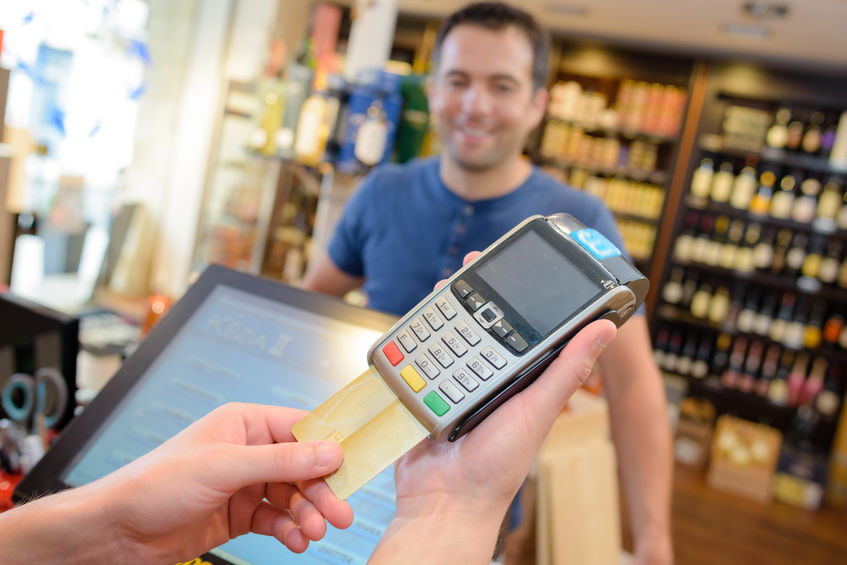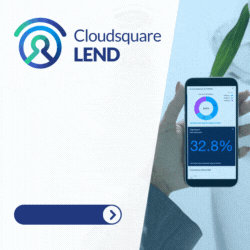payments
NovoPayment, Latina-founded BaaS Plans to Expand
April 21, 2022 Novopayment has raised $19 million in Series A financing, led by Fuel Venture Capital and IDC Ventures. The company, which offers digital banking, payment, and card solutions, is planning to grow and expand within current and further US markets while focusing on countries in Latin America and the Caribbean.
Novopayment has raised $19 million in Series A financing, led by Fuel Venture Capital and IDC Ventures. The company, which offers digital banking, payment, and card solutions, is planning to grow and expand within current and further US markets while focusing on countries in Latin America and the Caribbean.
CEO and Co-founder Anabel Perez stated, “We define a digital payment as the simple transfer of value from one payment account to another using a digital service such as a mobile device, POS, or computer.”
With the new funding, NovoPayment plans to continue increasing capabilities, introduce new features and functionalities, heighten security, and capitalize on US market opportunities. To accelerate their expansion of current offices in Mexico, Colombia, Peru, Ecuador, and headquarters in Miami, they are adding over 100 new engineers, business development, and product experts to their team. Austin and San Francisco are the first two spots where the branching out will begin.
“Austin and San Francisco are huge hubs for tech innovation and we want to expand there to ensure we attract the best talent for our operations,” Perez discussed. “As we grow in those markets, we’ll assess if we need more boots on the ground in additional states.”
NovoPayment currently holds a strong placement in the LAC region and works with several US clients and partners. This places the company in the right position to broaden in these markets they already have successful track records in.
“Based on our ongoing discussions with clients, we have special insight into the challenges and technology gaps these markets face, and realize the potential to further connect the Americas with a common banking infrastructure. We will be growing our product offerings to enable new data and money flow solutions to account for the increasingly globalized, cloud-based world of financial services,” Perez explained.
As Miami is the “Latin America capital of the US,” NovoPayment holds an advantage as a native of South Florida with the tech scene gravitating towards this region. Miami has served as a gateway to other markets.
“Unlike other companies that are now playing catch up and rushing to the LatAm market, we have a strong foothold and reputation in 14 markets across the Americas,” said Perez. “Establishing those relationships, and understanding the nuances of each market, requires regional expertise that takes time to build.”
Q & A with Ryan McCurry of ACHWorks About the Future of Small Business Lending
February 22, 2022 In a recent chat, deBanked talked with Ryan McCurry, President of ACHWorks. McCurry discussed the future of his company, payments, small business financing, and the impact of digital assets on the industry.
In a recent chat, deBanked talked with Ryan McCurry, President of ACHWorks. McCurry discussed the future of his company, payments, small business financing, and the impact of digital assets on the industry.
Q (Adam Zaki): Your company recently announced an acquisiton. How does this move help take ACHWorks to where the company wants to go?
A (Ryan McCurry): We are excited to share that ACHWorks was acquired by VeriCheck Inc. on December 31, 2021. VeriCheck Inc. (VCI) is a wholly owned subsidiary of Commercial Bank of California (CBC), who has been one of ACHWorks’ sponsor banks for nearly 20 years.
The acquisition brings more resources, both in terms of staffing and capital to ACHWorks’ business efforts. Conversely, ACHWorks’ sales approach, market specializations and diverse technical capabilities will support VCI’s growth goals. By combining the teams and technology, we believe we will compound our benefits to reach an even higher level of success together.
The great news with this acquisition is that where ACHWorks was weak, VCI is strong. Likewise, ACHWorks has some unique technology and expertise that VCI hadn’t leveraged before and can now capitalize upon.
Furthermore, VCI relies heavily on partnerships with ISO’s and third party gateways for processing ACH payments with a high number of merchants across all sectors, whereas ACHWorks tends to specialize in a few verticals while maintaining direct sales and direct relationships with all merchants – even when the merchant is utilizing an integrated software partner.
Q: Are ACH payments here to stay? With so many ideas floating around in this space, what is the future of ACH?
A: The future of the ACH as a payment system is strong and growing quickly. In 2021, the ACH network grew by 29.1 billion payments valued at $72.6 trillion dollars. Same Day ACH grew by 74% over 2020 and total volume was up almost 9%, continuing a 7-year growth trend. Business-to-business ACH payments grew at a rate above 20% and 33% over the last two years, respectively.
We believe the ACH payments space is going to continue to grow and become a more widely used payment rail, and our acquisition is evidence of that growth.
Q: What is the biggest issue your company is currently overcoming?
A: There are always challenges facing the payments industry. Naturally, as a fintech industry, payments companies regularly face emerging technology, regulatory or legislative activity, and ongoing cybercrime.
Currently, our focus is blending the VCI and ACHWorks teams and evolution of our joint technology. We are pleased to share that VCI hired the entire ACHWorks operational team, and is retaining all of our existing technology and benefits to our clients. Bringing the two platforms and teams together will have exponential benefits for clients and partners moving forward.
Q: The small business financing industry is becoming less reliant on the traditional sales models. How will ACHWorks combat this? Will you help the funders/brokers innovate to help secure the current infrastructure or seek new tech clients that are stepping into the space?
A: There’s the old saying that change is the one constant. Initially, business finance companies only wanted ACH for reoccurring daily debits, and as merchant demographics changed weekly or custom payment frequencies have become more prevalent. However, now about half of our business finance clients use ACHWorks’ technology not just for debiting merchant receivables, but also for sending ACH Credits to merchants for funding a deal, automating syndication payments for participation rates or paying commissions to brokers.
Likewise, ACHWorks offered Same Day ACH capability to our clients on the first day it become available on the ACH Network. The use of Same Day ACH has been slowly increasing as funders utilize it both to fund merchants or to act on a merchants request to charge them today (most common on distressed accounts).
As the funder / broker relationship continues to evolve, ACHWorks will be there to help facilitate the movement of the funds. We hope to leverage our unique status of being owned by a bank to bring new technologies to the business finance industry and other spaces that are under-supported by traditional payment processors. We are excited for these new capabilities to come and will keep the deBanked community updated as we have more to share.
Q: There seems to be a lot of payments companies across fintech. The elephant in the room at Money 20/20 in October was the ‘payments bubble’ taking place. What is your take on this? Is fintech looking too much into payment processing innovation?
A: Automobiles have been around for about 140 years, and yet innovation continues to happen. They have seen the switch from steam to electric, to internal combustion and back to electric. Computer technology has only been common in business usage since the 50’s and the internet has only been heavily used since the late 90’s. When I started in this business, we used to mail our software to clients on a series of 14 floppy disks. I would argue that the innovation and evolution of payments and fintech is only in its infancy.
As technology continues to permeate all walks of life, we expect to see payments leveraged to make commerce more organic with far less friction. Most payment processors I speak with feel that we are the original “fintech” and that the newly emerging “fintech” market is just utilizing the infrastructure we put in place.
Q: Are cryptocurrencies a topic of conversation in your office? Blockchain tech offers major benefits in the payments world. Do you or your company have any thoughts on how this could be leveraged?
A: You can’t escape crypto, it invades all conversations these days. However, our focus is on working with fiat currency and regulated payment channels because we process ACH payments through the Federal Reserve utilizing State or Nationally chartered banks. Don Singer, the CEO of VCI and I were discussing this topic previously, and he told me crypto is the new shiny sports car, or personal aircraft, but we work on the rail road. ACH is not as sexy as crypto, but it moves nearly all of the money in the U.S. Those debit card, credit card, Venmo, Zelle and real time payments systems are just the messaging systems, the money is being moved later that day, and it’s being moved via ACH.
Buy Now Pay… Now?
December 22, 2021 During this year’s online Christmas shopping you may have noticed a new button at checkout from your favourite BNPL providers – “Pay Now”.
During this year’s online Christmas shopping you may have noticed a new button at checkout from your favourite BNPL providers – “Pay Now”.
The pay in full option allows shoppers to initiate a direct bank transfer without pulling out a credit card. Both Klarna (through their acquisition of Sofort) and Affirm have launched theirs.
This begs the question… umm why?
Customer preference. “I thought the whole point of BNPL was to spread your payments out over time?” Merchants attract more shoppers, shoppers receive interest free loans. It’s a win-win.
Correct. But not all shoppers are looking to defer payments in installments or to the end of the month on their credit cards. By offering a one-click pay in full option, BNPLs widen their net to shoppers not interested in financing.
Regulation. As with all financial products, regulators are sensitive to marketing; particularly ensuring that consumers are not being encouraged to take on more than they can afford. A pay in full option sends a strong sign to both regulators and consumers that BNPLs are completely aligned with any payment preference.
Banking > Lending. BNPLs are expanding beyond POS finance to a full banking suite of products:
- Klarna recently launched virtual cards in the UK.
- Affirm launched a cash-back savings account.
- Afterpay is now part of the artist-formerly-known-as Square (Block), and will be integrated into their suite of small business banking solutions.
- PayPal has gone the opposite way, starting with checkout and expanding into BNPL themselves and through their acquisition of Paidy in Japan.
All four of these companies are converging around an online banking model that goes well beyond payments and lending.
Payment processing. Payments are a zero-sum game. At checkout, there can only be one winner per transaction. A shopper either pays with cash, cards, or more recently installments (over simplification). Visa and Mastercard have expressed concern that BNPL eats into the demand for revolving credit, and in turn their payment rails. A pay now option will take even more traffic away from these rails, allowing BNPLs to compete head to head with the payment titans.
How to Think About Credit Invisibility
July 29, 2021Authored by:
Lily Cook, Researcher at Canadian Lenders Association
Tal Schwartz, Senior Advisor at Canadian Lenders Association
 Recent research by PERC has highlighted the issue of credit invisibility in Canada, defined as “persons with either no account payment history in their credit report (referred to as “no files”) or fewer than three accounts in their credit report (referred to as “thin files);”
Recent research by PERC has highlighted the issue of credit invisibility in Canada, defined as “persons with either no account payment history in their credit report (referred to as “no files”) or fewer than three accounts in their credit report (referred to as “thin files);”
In Canada, credit scores are calculated using payment history, outstanding debt, credit account history, recent inquiries and types of credit. However, according to research from Cornerstone Advisors, the ‘on-ramps’ to being credit visible are limited and come with challenges. The most common paths are:
- Credit cards:
- Collections: Collections as a point of entry into a credit system immediately sets the consumer at a disadvantage, since the first thing to identify them is a negative characteristic.
In general, Canadians under 25 tend to use credit cards at far lower rates. Those in that age group who do have a credit history have the highest percentage of credit scores below 520, according to Equifax Canada.
The rate and impact of credit invisibility in Canada is significant:
- 35.3% of Canadians are credit invisible vs. 19.3% in the US.
- the issue disproportionately affects immigrants, minority communities or younger individuals.
How are fintechs addressing this?
1. Access to alternative data
Canadian data aggregators provide lenders with access to non-traditional credit information that advanced firms can apply ML to in order to better adjudicate credit.
- Open banking data providers like Flinks and Inverite provide consumer transaction history information that allows fintech lenders to underwrite credit invisibles based on their cash flow instead of their credit score.
- Commercial data providers like Forward AI, Boss and Railz pull financial data from accounting systems, payroll, and point of sale terminals in order to give lenders a more fulsome picture of a businesses health.
2. Make alternative data mainstream
PERC Canada recommended that the CFPB explicitly include non-financial institutions in their definition of a ‘creditor’ in order to report positive payment data to credit bureaus. Credit reports that could ‘reward’ customers for paying telecommunications bills on time, for example, could make the credit system more forgiving in the future.
- Billi, for example, a Canadian fintech allows users to integrate on-time payments for their Amazon Prime and Netflix accounts into their credit reports in order to improve them.
Canadian credit bureaus have also taken active steps to being more inclusive of alternative data. A prime (no pun intended) example is Landlord Credit Bureau’s (LCB) and Equifax’s partnership to allow rent payments to count towards credit scores.
- Both as a way to reduce risk for landlords and give tenants a leg up in the market, this shared use of alternative data is “ninety-plus per cent….positive in nature, so overwhelmingly landlords use this to reward tenants,” LCB’s CEO, Zachary Killam said.
3. Create a better on ramp to credit building
Credit building loans can unlock credit for those with minimal histories or challenging track records. These are installment loans that only pay out once the customer has paid them off, and are offered by fintechs like as Spring, Marble and Refresh.
Essentially reverse loans, the reverse structure protects the lender, in the event that the customer doesn’t make all their payments. Over the course of the loan term, the customer’s payments are reported to the credit bureaus. Borrowell, which recently acquired Refresh’s credit building loan portfolio, is now one of the largest providers of this service in Canada.
So what’s the solution?
In order to drive meaningful change on the issue of credit invisibility, fintechs must continue to enable lenders to challenge the limitations of the credit system – by improving access to alternative data, normalizing its use and building better on-ramps to the credit system than collections and credit cards.
Credit invisibility is caused largely by structural issues within Canada’s data markets, but fintechs are starting to fill these gaps.
CC Splits Still Make Profits, Payments Knowledgeable Funders Benefit
June 15, 2021 Back in its heyday, the MCA industry began as credit card factoring. The original product was simple- purchase future credit card receivables, and collect a percentage of them every day: easy peasy. Then, the industry broadened into ACH, funding businesses that did not have credit card purchases and credit card receivables became less common.
Back in its heyday, the MCA industry began as credit card factoring. The original product was simple- purchase future credit card receivables, and collect a percentage of them every day: easy peasy. Then, the industry broadened into ACH, funding businesses that did not have credit card purchases and credit card receivables became less common.
But some funders still work with credit card payments through long-standing payment processor relationships. Cash Buoy is a Chicago-based MCA firm that uses a network of twelve major credit card processors and thousands of representatives from payments ISOs to fund old-fashioned MCAs. Co-Founder and president Sean Feighan would tell you that having connections in payments pays off for both merchants and ISOs.
“The whole point is to add value to their business. By doing split funding remittance,” Feighan said. “It’s a much more comfortable way for the merchant to pay back the advance, it gives them some breathing room on the ebbs and flows of their volume, as opposed to having that hard fixed daily ACH that doesn’t care if they were closed on Monday, are slow on Tuesday, or we’re in a global pandemic.”
Feighan attests that the CC model still works great. He said alongside co-founder Brian Batt, they started Cash Buoy to give ISOs a better option. He boasts a renewal rate of 90% on his CC products, and his default rates for standard MCAs are a “night and day difference” with CC splits.
But operating heavily within the payments realm requires some expertise, something that long-time veterans of the MCA space are fortunate to have accumulated from the era of the product’s origin.
 Steven Hunter, a multi-decade industry vet explained where the MCA concept came from. Hunter worked at CAN Capital back in 2000 when it was still was called AdvanceMe when he and the data team developed one of the first credit card factoring products.
Steven Hunter, a multi-decade industry vet explained where the MCA concept came from. Hunter worked at CAN Capital back in 2000 when it was still was called AdvanceMe when he and the data team developed one of the first credit card factoring products.
“The idea came across to build a credit card-based product, because a lot of the original development team other than myself, were the First Data guys,” Hunter said. “And they said ‘okay well what if we could factor future sales, instead of three invoices or accounts receivable or inventory’, which we all know how to factor those things, that’s been in place since biblical times.”
So they built a model, aiming to fund merchants and take out a small amount of money from their credit card splits. Merchants would never see the money hit their bank, and the product just felt like free investing money paid for off of the increase in future sales.
When restaurants and other merchants shut down during the pandemic or rolled back to 25% capacity, many ACH funders found out their customers could not keep up with the pre-set debits. While defaults were on the rise, Cash Buoy was getting paid back, Feighan said, at an admittedly slower rate but still seeing returns.
Feighan has intentionally shied away from ACH. Cash Buoy is modeled on his and Batts’ connections in the payments space. They founded Cash Buoy after five or six years of experience in on-boarding merchant accounts. Feighan said he tried brokering but became disappointed with the process of working with an outside funder.
“[Other firms] may not have the relationships to get split funding at national processors,” Feighan said. “Maybe they didn’t have enough business or money in the bank when they went through the application process with different processors to get true split funding accommodations.”
Hunter agreed that without payment connections it is hard to factor CCs these days. Shortly after AdvanceMe began CC splits, other firms caught up and began developing similar products, with slightly changed terms like automatic set ACH draws. Eventually, he said this made MCAs more loan-like as opposed to a real variable product.
In 2021, there are many reasons that firms adopt ACH right off the bat, he said.
“Well, several reasons one, not every company takes credit cards,” Hunter said. “The thing is that some credit card processors, I’m not going to name any names, are very hostile to the product and they will not actually help people. They won’t help you manage the remittance, they won’t split for you, because they consider you to be a competitor, afraid you will take a portion away.”
 The final reason Hunter said is a lot less elegant. He said in order to make this work, as a direct funder, you have to exchange files with every credit card processor you work with every night on every deal you have.
The final reason Hunter said is a lot less elegant. He said in order to make this work, as a direct funder, you have to exchange files with every credit card processor you work with every night on every deal you have.
“So you got to send them something out and say, populate this for us. ‘Joe’s Bait Shop, What did they do today? Today they did this much money, your split is 11%, here’s what’s coming to you,'” Hunter said. “Then you import that back into your system and Joe’s Bait Shop’s balance drops by this amount. Right, that’s hard. I mean it’s a pain in the ass to manage, and I have people who do nothing but exchange, you’ve got to have processors who work with you and you’ve got to have the expertise.”
Hunter now works as a consultant, known in the industry as a go-to for MCA funding help. As for Cash Buoy, after the pandemic year, things are only on the up and up. Covid could not have happened at a worse time right after a three-year bull run, Feighan said, but now that things are back, there are “high water funding amounts each month.”
“The biggest thing here in Cash Buoy are our partners, our ISO partners, and processors,” Feighan said. “And if anybody were to say, ‘tell me, what’s the most important thing to you, Cash Buoy,’ it is 100% Our agent partner program. That is number one. The whole point of the company was to be able to provide a ton of value to national processors and ISOs.”
SEAA: 1,000+ Attendees In Atlanta Next year, Thanks deBanked
June 8, 2021 1,000 people registered at the Southeast Acquirers Association 20th-anniversary conference Bonita Springs Florida: a smash hit in part due to the hybrid presentation model and deBanked’s video coverage, the executive board members of SEAA said. Treasurer John McCormick said next year in Atlanta would be even bigger, following a hybrid in-person venue with recordings and live streams that would pack over 1,000 participants in the show.
1,000 people registered at the Southeast Acquirers Association 20th-anniversary conference Bonita Springs Florida: a smash hit in part due to the hybrid presentation model and deBanked’s video coverage, the executive board members of SEAA said. Treasurer John McCormick said next year in Atlanta would be even bigger, following a hybrid in-person venue with recordings and live streams that would pack over 1,000 participants in the show.
“To have our biggest show on the West Coast of Florida was really gratifying,” he said. “We registered over 1,000 and were just shy of that number with check-ins. I think we’ll [surpass that] next year in Atlanta, which will be a great celebration for our board and advisory committee.”
McCormick helped co-found the organization along with Audrey Blackmon and Judy Foster in 2001. In March, he talked with deBanked, describing the difficult choice to go back in person full capacity, a decision that turned into a major win. Derek Vowels, director of partner solutions at Aliaswire and SEAA board member, thanked Cypress Planning Group for the venue support and deBanked for helping produce the in-person and online hybrid model.
Everyone rose to the occasion, Vowels told Green Sheet, thanking Sean Murray, deBanked chief editor, publisher, and deBanked reporter Johny Fernandez, who conducted live interviews at the conference. “Attendees can view every breakout session, presentation, and popular CBD panel on the app and web portal for the rest of the calendar year,” he said. “Going forward, hybrid events that combine face-to-face meetings with recordings will be the norm.”
Alongside live streaming from the show floor on May 25th from 9 am to after 6 pm, Sean and Johny pored through interviews with industry experts.
Sam Schapiro, leader of funding application platform Fundomate, talked with Johny about the resilience of the human species, American small businesses, and funding slowdown.
Shawn Smith, the CEO of Dedicated Commercial Recovery, met with Sean to talk about the new post-covid environment in the B2B space and Florida golf.
Aviv Baron, the founder of Direct Payment Group, talked with Sean about changes in merchant spending, payment processing, cannabis, and drop shipping trends in the past year.
And automated accounts receivable fintech CEO Garima Shah talked with Johny about her firm Biller Genie, and the world opening for business after a year of covid.
deBanked is looking forward to the new year as covid restrictions lift and events come back in person.
International Payments Firm Lands $125M Series B
May 26, 2021 Paysend, a UK-based international payments processor, landed a $125 million Series B investment round led by London-based One Peak Partners. Paysend said it would use the funds to invest in its infrastructure, cutting the costs of sending funds toward a goal of $5.4 billion in savings towards customers by 2025.
Paysend, a UK-based international payments processor, landed a $125 million Series B investment round led by London-based One Peak Partners. Paysend said it would use the funds to invest in its infrastructure, cutting the costs of sending funds toward a goal of $5.4 billion in savings towards customers by 2025.
Founded in 2017, The firm focuses on helping consumers and merchants send payments worldwide in any currency. To date, the firm said it had reached more than 3.7 million consumers and firms, connecting 110 countries.
“Paysend’s vision is to develop the next generation integrated global payment ecosystem for consumers and SMEs,” Paysend CEO Ronnie Millar said. “Our innovative technology is connecting 12bn cards worldwide to pay and send instantly anywhere, anyhow. Any currency – we call this Money for the Future.”
Paysend supports connections between 12 billion cards globally across Mastercard, Visa, China UnionPay, and local card schemes and provides over 40 payment methods for online SMEs. McKinsey’s 2019 Global Payments Report valued the untapped card to card international payments market at an estimated $133tn.
“We are excited by Paysend’s enormous growth potential,” Humbert de Liedekerke, a managing Partner at One Peak, said. “Paysend has built an exceptional payments platform by maintaining an unwavering focus on its customers and constantly innovating.”
SEAA Kicks Off in Florida
May 25, 2021More than a thousand people are attending the 20th annual SEAA conference in Bonita Springs, FL that started on Monday. The show is a staple of the payments industry.
“It’s a changing game every minute,” said SEAA board member Derek Vowels about what’s going on in payments .
The packed event has more than 90 companies exhibiting. The “Flamingo” level sponsors include American Express, IRIS CRM, Worldpay, Cardconnect, and Electronic Merchant Systems.
deBanked has been streaming live at debanked.com/tv/. Attendees are saying that it’s great to be back in person.
The May 25th Live Stream schedule is as follows:
9:00 – 10:45am,
3:00 – 4:00pm
5:00 – 6:30pm
Opening 9 minutes from May 24th:





























